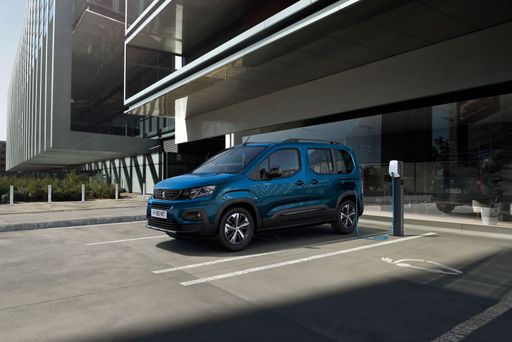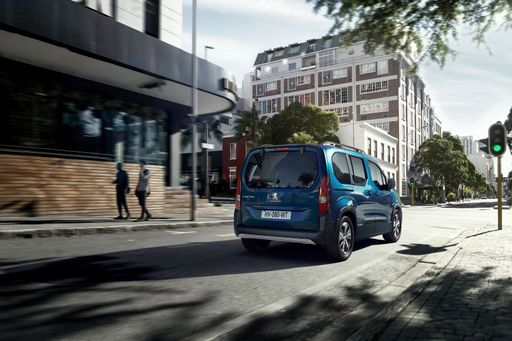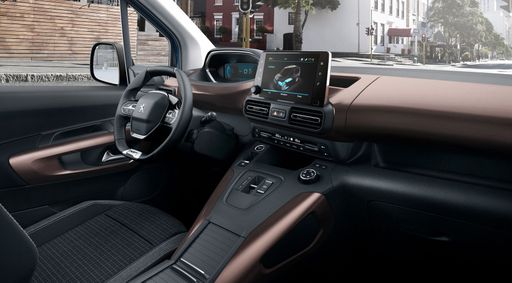Vauxhall Vivaro vs Peugeot Rifter – Which model is better for everyday use?
Everyday use, family trips or long-distance drives – here’s where the differences show.
Discover whether Vauxhall Vivaro or Peugeot Rifter fits your lifestyle better.
Costs and Efficiency:
Price and efficiency are often the first things buyers look at. Here it becomes clear which model has the long-term edge – whether at the pump, the plug, or in purchase price.
Peugeot Rifter has a distinct advantage in terms of price – it starts at 23800 £, while the Vauxhall Vivaro costs 33200 £. That’s a price difference of around 9381 £.
Fuel consumption also shows a difference: Peugeot Rifter manages with 5.60 L and is therefore to a small extent more efficient than the Vauxhall Vivaro with 6.20 L. The difference is about 0.60 L per 100 km.
In terms of energy consumption, the advantage goes to the Peugeot Rifter: with 18.30 kWh per 100 km, it’s evident more efficient than the Vauxhall Vivaro with 23.60 kWh. That’s a difference of about 5.30 kWh.
As for range, the Vauxhall Vivaro performs barely noticeable better – achieving up to 352 km, about 13 km more than the Peugeot Rifter.
Engine and Performance:
Power, torque and acceleration are the classic benchmarks for car enthusiasts – and here, some clear differences start to show.
When it comes to engine power, the Vauxhall Vivaro has a clearly perceptible edge – offering 180 HP compared to 136 HP. That’s roughly 44 HP more horsepower.
In acceleration from 0 to 100 km/h, the Vauxhall Vivaro is hardly perceptible quicker – completing the sprint in 10.50 s, while the Peugeot Rifter takes 10.80 s. That’s about 0.30 s faster.
In terms of top speed, the Vauxhall Vivaro performs barely noticeable better – reaching 185 km/h, while the Peugeot Rifter tops out at 184 km/h. The difference is around 1 km/h.
There’s also a difference in torque: Vauxhall Vivaro pulls evident stronger with 400 Nm compared to 300 Nm. That’s about 100 Nm difference.
Space and Everyday Use:
Whether family car or daily driver – which one offers more room, flexibility and comfort?
Seats: Vauxhall Vivaro offers evident more seating capacity – 9 vs 7.
In curb weight, Peugeot Rifter is slightly lighter – 1561 kg compared to 1722 kg. The difference is around 161 kg.
In maximum load capacity, the Vauxhall Vivaro performs convincingly better – up to 6100 L, which is about 2600 L more than the Peugeot Rifter.
When it comes to payload, Vauxhall Vivaro evident takes the win – 1226 kg compared to 814 kg. That’s a difference of about 412 kg.
Who wins the race?
The Vauxhall Vivaro proves to be wins the duel decisively and therefore becomes our DriveDuel Champion!
Vauxhall Vivaro is the better all-rounder in this comparison.
Vauxhall Vivaro
Vauxhall Vivaro
The Opel Vivaro is a versatile van that excels in both practicality and comfort, making it a popular choice for businesses and families alike. Its sleek design is complemented by a spacious interior, providing ample room for passengers or cargo. With a focus on durability and performance, this vehicle is well-suited for long journeys and demanding workloads.
detailsPeugeot Rifter
Der Peugeot Rifter beeindruckt mit seinem robusten Design und seiner hohen Vielseitigkeit, die ihn ideal für Familien und Outdoor-Abenteuer macht. Der Innenraum ist geräumig gestaltet und bietet zahlreiche innovative Technologien, die den Komfort und die Sicherheit der Insassen erhöhen. Zudem überzeugt der Rifter mit seiner hervorragenden Fahrdynamik, die sowohl in der Stadt als auch auf längeren Strecken für ein angenehmes Fahrerlebnis sorgt.
details @ media.stellantis.com
@ media.stellantis.com
 @ media.stellantis.com
@ media.stellantis.com
 @ media.stellantis.com
@ media.stellantis.com
 @ media.stellantis.com
@ media.stellantis.com

|
|
|
|
|
Costs and Consumption |
|
|---|---|
|
Price
33200 - 52500 £
|
Price
23800 - 36600 £
|
|
Consumption L/100km
6.2 - 7 L
|
Consumption L/100km
5.6 - 6 L
|
|
Consumption kWh/100km
23.6 - 24 kWh
|
Consumption kWh/100km
18.3 - 19.1 kWh
|
|
Electric Range
221 - 352 km
|
Electric Range
328 - 339 km
|
|
Battery Capacity
-
|
Battery Capacity
-
|
|
co2
0 - 184 g/km
|
co2
0 - 158 g/km
|
|
Fuel tank capacity
69 L
|
Fuel tank capacity
50 L
|
Dimensions and Body |
|
|---|---|
|
Body Type
Cargo Van, Bus
|
Body Type
High Roof Estate
|
|
Seats
3 - 9
|
Seats
5 - 7
|
|
Doors
4
|
Doors
4 - 5
|
|
Curb weight
1722 - 2260 kg
|
Curb weight
1561 - 1941 kg
|
|
Trunk capacity
-
|
Trunk capacity
322 - 1050 L
|
|
Length
4980 - 5331 mm
|
Length
4405 - 4755 mm
|
|
Width
1920 mm
|
Width
1848 mm
|
|
Height
1890 - 1935 mm
|
Height
1818 - 1837 mm
|
|
Max trunk capacity
3200 - 6100 L
|
Max trunk capacity
3000 - 3500 L
|
|
Payload
840 - 1226 kg
|
Payload
489 - 814 kg
|
Engine and Performance |
|
|---|---|
|
Engine Type
Electric, Diesel
|
Engine Type
Electric, Diesel
|
|
Transmission
Automatic, Manuel
|
Transmission
Automatic, Manuel
|
|
Transmission Detail
Reduction Gearbox, Manual Gearbox, Automatic Gearbox
|
Transmission Detail
Reduction Gearbox, Manual Gearbox, Automatic Gearbox
|
|
Drive Type
Front-Wheel Drive
|
Drive Type
Front-Wheel Drive
|
|
Power HP
120 - 180 HP
|
Power HP
102 - 136 HP
|
|
Acceleration 0-100km/h
10.5 - 14.3 s
|
Acceleration 0-100km/h
10.8 - 13.6 s
|
|
Max Speed
130 - 185 km/h
|
Max Speed
132 - 184 km/h
|
|
Torque
260 - 400 Nm
|
Torque
250 - 300 Nm
|
|
Number of Cylinders
4
|
Number of Cylinders
4
|
|
Power kW
88 - 132 kW
|
Power kW
75 - 100 kW
|
|
Engine capacity
1499 - 2184 cm3
|
Engine capacity
1499 cm3
|
General |
|
|---|---|
|
Model Year
2024 - 2025
|
Model Year
2024
|
|
CO2 Efficiency Class
A, F, G
|
CO2 Efficiency Class
A, E, F
|
|
Brand
Vauxhall
|
Brand
Peugeot
|
What drive types are available for the Vauxhall Vivaro?
The Vauxhall Vivaro is offered with Front-Wheel Drive.
The prices and data displayed are estimates based on German list prices and may vary by country. This information is not legally binding.
